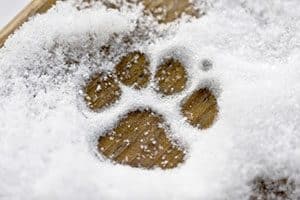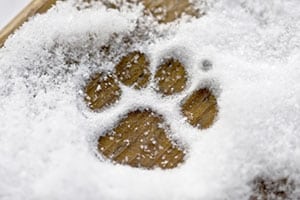Sensible salting practices can reduce environmental impacts from salting operations and save your community. Simple changes in the amount and ways we salt can make a big difference.
Environmental Impacts – Road salt (sodium chloride) negatively impacts our soil, water, vegetation, and wildlife. It can destroy soil stability and decrease the soil’s ability to store water. Road salt also increases soil erosion. In some cases, it can even cause the soil to release nutrients back into the water. One teaspoon of road salt can permanently pollute five gallons of water. Chlorine is not easily filtered out of water by water quality practices or the natural environment, and it is instead transferred to soil or ground water tables. Our ground water already holds high concentrations of chlorine. Ground water tables serve as a source of water for streams during dry periods, which means all of this chlorine can eventually end up in our streams. High levels of chlorine in our streams are toxic to fish and insects, and low levels can reduce fish and insect reproduction and survival rates. In addition, the direct road splash during salting operations can kill grass and plants.
Economic Impacts – In 2007, 18.3 million metric tons of salt were sold. The annual deicing costs for the United States are estimated to be around $2.3 billion. Yet road salt costs communities a lot more money than just purchasing costs. Corrosive to bridges, buildings, vehicles, and infrastructure, road salt increases the maintenance costs of these structures by billions of dollars. Road salt also threatens drinking water supplies, especially in well-water areas. It has high disposal costs.
Compliance Impacts – The US Environmental Protection Agency (EPA) Water Quality Criteria states that chloride levels at or above 230 mg/l for over four days are harmful to aquatic life. High levels of chloride in ground water create streams with high levels in fall when the streams rely on ground water as a source of water during the dry period. These elevated fall concentrations make it easier to raise concentrations to toxic levels in winter. It is estimated that sites with 50-100% urban land cover exceed chloride water quality criteria 100-200 days a year. Water quality impairments are likely to occur when at least 15% of the watershed is dedicated to urban development and transportation uses and/or salt loading rates are approximately 70 metric tons per square kilometer. In the Tinker’s Creek watershed, urban or impervious cover ranges from 6.16% in the south to 43.7% in the north.
Simple changes in the ways and amounts you salt at home can help reduce these harmful effects of road salt without jeopardizing your safety. In addition, sensible salting can save money!
Shovel Snow – Removing snow and ice during a snowstorm, if possible, reduces the amount of salt required for deicing and increases the efficiency of deicing operations.
Follow Application Instructions – People often equate more salt with quicker melting. This is not true! Excess salt does not help melt ice but is only carried to our waterways when the ice does melt. Following the application instructions reduces over-application of deicers.
Reduce Chemical Application – Only apply road salt where you really need it. For example, you may not require access to every door into your house but only the front door. Create a path by shoveling snow to your front door and then apply the correct amount of road salt.
Consider Temperature – Most road salts are ineffective below 15°F, so do not waste your time applying salt when it will not help melt the ice! Sand can be coupled with salt for better traction but must be swept up after use. Sediment is another major pollutant of our stormwater!
Sweep Up Extra Road Salt – Excess salt does not help melt ice! If the ice is gone but there is still salt on your driveway, sweep it up; it is not doing anything.
Pet Safety – Sodium chloride, calcium chloride, and magnesium chloride can burn the paws of your pets. Potassium acetate is a safer alternative to use but can be difficult to find. Reduce your salt usage, for your pet’s sake, and wash their paws after walking your pets.
Tinker’s Creek Watershed Partners would be happy to answer any questions you may have about sensible salting practices at home. Click here to read “Sensible Salting Practices for Communities.” Please contact us with any questions!
Erica Matheny
Deputy Executive Director
330-963-6863

